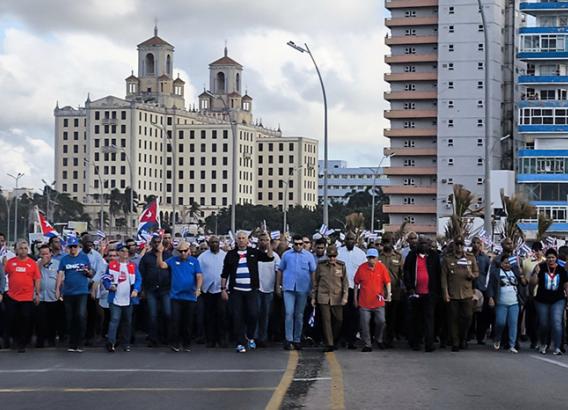A Cultural Bridge Through Film: Arab Cinema and Audiovisual Productions in Latin America
especiales

Cinema in Latin America has become a powerful space for cultural exchange, fostering a growing interest in the Arab experience through films, documentaries, and festivals. These initiatives highlight both the historical legacy and contemporary dynamics of Arab communities in the region. Notable examples include the LatinArab International Film Festival in Argentina, the Mostra Mundo Árabe de Cinema in Brazil, and the Lebanese Film Festival in Mexico, all of which have played a key role in promoting Arab audiovisual content in Latin America.
Audiovisual productions focusing on the Arab diaspora go beyond portraying historical migration. They delve into complex narratives of identity, belonging, and transformation, showcasing how Arab culture has influenced local architecture, gastronomy, and traditions.
Filmmakers from both Arab and Latin American backgrounds have used cinema as a tool to reinterpret migration histories, challenge stereotypes, and construct new narratives that blend nostalgia for the homeland with the vibrant, ever-changing reality of Latin America.
The emergence of Arab-themed film festivals has been instrumental in amplifying these stories. Events in cities such as Buenos Aires, São Paulo, and Mexico City have become platforms for cultural exchange and dialogue on issues such as identity, migration, and multiculturalism. For instance, the Mostra Mundo Árabe de Cinema in São Paulo, organized by the Instituto da Cultura Árabe (ICArabe), annually showcases a curated selection of films from Arab countries that promote intercultural understanding.
In Argentina, LatinArab, organized by Cine Fértil, has gained international recognition as a platform for dialogue between Arab and Latin American cultures. Meanwhile, the Lebanese Film Festival in Mexico City celebrates Lebanese heritage through contemporary and classic films, eflecting the hybrid identity of many descendants of Arab immigrants.
An Argentinian film like “Habi, la extranjera” (2013), directed by María Florencia Álvarez, is a co-production between Argentina and Brazil follows the life of Analía, a young woman who moves to Buenos Aires and, through a series of unexpected encounters, delves into the local Islamic community. Adopting the identity of “Habi,” the film deepens issues of identity, belonging, and the experience of the Arab diaspora, offering an intimate look at the challenges faced by those seeking their place in a new cultural environment. Both films highlight the richness of international co-productions and their ability to explore diverse and meaningful narratives.
Another exceptional example is the documentary “Only the Sea Separates Us” (2021), that presents the lives of four young filmmakers: the Syrians Khaldiya Amer Ali and Marah Mohammad Alkhateeb, residents of the Za’atari refugee camp in Jordan; and the Peruvians Karoli Bautista Pizarro and Christy Cauper Silvano, from the Shipibo-Konibo indigenous community in Lima. Through cinematic correspondences, they share experiences about motherhood, displacement, and resistance, reflecting their realities and strengthening the connection between them.
“Equinoccio, el jardín de las rosas” (1991), Is another Argentinian film. Directed by Pablo César, is a milestone in Argentine cinema as it is the first co-production between Argentina and Tunisia. The film, shot entirely in Tunisia and in Arabic, presents five fables narrated by a teenage angel in different towns, exploring universal themes through a poetic aesthetics.
Collaborations between Arab and Latin American filmmakers have also led to innovative projects that merge narrative styles from both cultures, breaking boundaries and creating hybrid works that reflect their shared diversity.
Some of these co-productions incorporate the poetic and symbolic elements typical of Middle Eastern cinema with the emotional intensity and social realism characteristic of Latin American film, inviting deeper reflections on migration, identity, and multicultural coexistence.














Add new comment